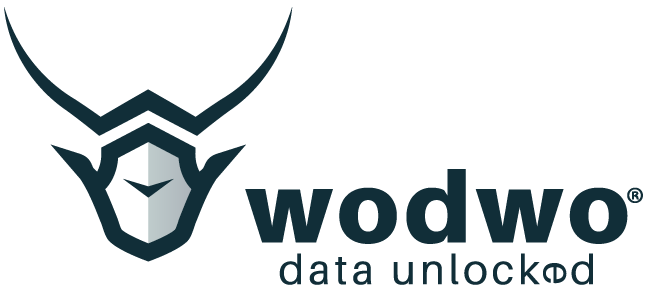
How much does it cost to gain a new customer these days? This number, also referred to as the customer acquisition cost (CAC) can vary greatly by industry. For example, according to Demand Jump, in travel, the average CAC is $7, but in software it can be as high as $395.
If we understand what our cost of customer acquisition is, then we can work on reducing that number to improve our bottom line. With this in mind, below we’ll explore everything you need to know about what CAC is, its importance, and how to reduce it. Moreover, we'll explore how leveraging technology, such as marketing analytics tools, Customer Relationship Management (CRM) systems, and audience modeling platforms can optimize your CAC and enhance your business's bottom line.
Brief explanation of customer acquisition cost (CAC)
As we just stated, the Customer Acquisition Cost (CAC) is a crucial metric representing the financial investment required to acquire a new customer. It encompasses various expenses, including marketing and sales costs.
Why the CAC is so important
Understanding and managing CAC is vital for businesses because it directly impacts profitability.
It guides pricing strategies, evaluates the effectiveness of marketing campaigns, and influences investment decisions. CAC encompasses marketing expenses, sales efforts, and other related costs.
Controlling CAC is essential for long-term sustainability and growth in today's competitive market. Put another way, managing CAC effectively can make or break a business.
A Deeper Understanding Customer Acquisition Cost

Let’s examine the elements that make up a CAC calculation. The Components of CAC Calculation encompass three main elements - marketing expenses, sales expenses, and other general costs.
1. Marketing Expenses
Marketing expenses incurred by a company for Customer Acquisition Cost (CAC) can vary widely based on the industry, business model, and marketing strategies. Here are some common examples:
- Advertising Costs
- Content Creation: Blog posts, videos, infographics, podcasts, etc…
- Search Engine Optimization (SEO): Expenses for improving organic search rankings
- Email Marketing
- Social Media Marketing
- Influencer Marketing and Sponsorships
2. Sales Expenses
These expenses account for the costs incurred by the sales team, including salaries, commissions, and bonuses. Additional fees that might be incurred directly related to sales include, but aren’t limited to:
- Sales training
- Sales tools and software (i.e. CRM software and/or email management software)
- Sales travel and entertainment
- Lead generation fees
- Support staff salaries
- Sales analytics tools
Other Associated Costs may include software tools, technology, and overheads, directly linked to customer acquisition efforts.
Importance of Monitoring CAC
There are four primary reasons it’s critical that a business monitors its customer acquisition cost:
- Assessing business profitability
- Guiding pricing strategies
- Evaluating marketing campaign effectiveness
- Investment decision-making
Calculating and Interpreting CAC
The Customer Acquisition Cost Formula is calculated by dividing the total costs of acquiring customers (including marketing expenses, sales expenses, and associated costs) by the number of customers acquired within a specific timeframe.
Here’s an example of CAC Calculation:
Let's say a company spent $10,000 on marketing and sales efforts in a month, and during that month, they acquired 100 new customers.
CAC = Total Marketing and Sales Costs / Number of New Customers
CAC = $10,000 / 100
CAC = $100 per customer
In this example, the CAC is $100 per customer for that month.
Example 2: CAC with More Detail
Consider a company that wants to calculate CAC with a more detailed breakdown of costs.
In quarter one, they spent $30,000 on marketing, $15,000 on sales team salaries and commissions, and $5,000 on other associated costs like software subscriptions and lead generation tools.
During that quarter, they acquired 500 new customers.
CAC = (Total Marketing Costs + Total Sales Costs + Total Other Costs) / Number of New Customers
CAC = ($30,000 + $15,000 + $5,000) / 500
CAC = $50,000 / 500
CAC = $100 per customer
In this example, the CAC is $100 per customer for the quarter.
Interpreting CAC values
Here's how to go about interpreting CAC values:
Compare with Industry Benchmarks
Start by comparing your CAC values to industry benchmarks. Many industries have typical CAC ranges, and understanding where you stand relative to your competitors can provide insights.
If your CAC is significantly higher than the industry average, it may indicate inefficiencies in your acquisition process that need attention.
High vs. Low CAC Implications
Consider the implications of high and low CAC values.
- High CAC: Suggests you're spending a significant amount of resources to acquire each customer.
- Low CAC: A low CAC is generally seen as positive, as it means you're efficiently acquiring customers at a lower cost, but don’t sacrifice quality for quantity.
Monitor Trends
CAC values can change over time due to various factors, such as seasonality, market shifts, or changes in your marketing strategies. Then again, sudden spikes in CAC might indicate a problem that warrants attention.
Analyze CAC Alongside Other Metrics
CAC should be analyzed alongside other key metrics, such as LTV and Return on Investment (ROI). Ideally, your CAC should be lower than the LTV.
Segment and Drill Down
Sometimes, CAC analysis is more insightful when you segment it. For example, you can calculate CAC for different marketing channels or customer segments which can help you determine where your marketing dollars should be spent.
Adjust Strategies
Based on your CAC interpretation, make data-driven decisions. If your CAC is too high, consider optimizing your marketing channels, refining your targeting, or improving lead quality.
If it's low, however, be sure to maintain the quality of customers you're acquiring and explore opportunities for scaling your acquisition efforts.
Strategies to Reduce CAC

At some point, you’ll need to determine methods for reducing your customer acquisition cost.
This is critical because it determines your profitability. Second, it determines how well your company is doing compared to the competition.
The four most popular strategies for reducing the cost of customer acquisition are:
- Targeted Marketing
- Improving Lead Quality
- Enhancing Customer Retention, and
- Referral and Word-of-Mouth Programs
Targeted Marketing
Targeted marketing is the practice of tailoring your marketing efforts to specific audience segments with shared characteristics or interests, increasing the relevance and effectiveness of your campaigns.
First, define the ideal customer profile. Identify the characteristics and traits of your most valuable customers. Then, tailor marketing efforts to specific segments
For example, if you sell clothing, segment your audience by factors like gender, age, and style preferences. Then, create customized marketing messages and campaigns for each segment. This will ensure your messaging resonates with their specific needs and interests.
Improving Lead Quality
This involves refining the process of identifying and nurturing potential customers to ensure that they are more likely to convert into paying customers, thereby enhancing the efficiency and effectiveness of your sales and marketing efforts.
- Implement qualification processes to ensure that the leads you're pursuing have a higher likelihood of conversion.
For instance, if you're a B2B software company, your qualification process might involve assessing a lead's budget, authority to make decisions, need for your solution, and timeline. This ensures your sales team focuses their efforts on leads with the highest potential.
- Collaborate between marketing and sales teams. Create a shared understanding of what constitutes a high-quality lead, and establish feedback loops for continuous improvement.
Sales teams can provide valuable insights into the types of leads that are most likely to convert, enabling marketing to refine their targeting strategies.
Enhancing Customer Retention
Building strong, lasting relationships with existing customers is easier when you provide exceptional experiences and value, which leads to increased loyalty and repeat business.
One way to do this is to personalize your communication and engage with them regularly. For example, if you run a subscription box service, send personalized thank-you notes or offer loyalty rewards such as coupons for a percentage off future orders to long-term subscribers. Happy customers are more likely to stay and refer others.
Another way to improve customer retention is to offer an exceptional post-purchase experiences
Provide excellent customer support and easy returns. Ask for feedback and use it to improve your products or services. You could even offer exclusive discounts to existing customers, encouraging them to return for future purchases.
Referral and Word-of-Mouth Programs
This means encouraging satisfied customers to recommend your products/services to others. You can ask for reviews, testimonials, or case studies that showcase their positive experiences with your product or service. Sharing real success stories can significantly influence potential customers.
Additionally, you could create referral programs that reward customers for referring new business. Offer incentives such as discounts, freebies, or cash rewards to both the referrer and the new customer. For example, a fitness app can offer a free month of premium access to users who refer friends, while their friends also get a discount.
Leveraging Technology to Optimize CAC
An example of leveraging technology to optimize CAC would be using marketing analytics tools to effectively track and analyze campaign performance, ensuring that marketing efforts are generating valuable results. These tools also assist businesses in identifying the most cost-effective channels for customer acquisition.
Another way to leverage technology to optimize your customer acquisition cost is to use an audience modeling platform. One example is using a tool like Wodwo which will help you create prospect audiences in order to find new customers.
Wodwo is a powerful tool powered by DatalineAI that allows marketers to build custom audience models without the need for data scientists, making it a simple, fast, and affordable solution to enhance their marketing strategies. When you use programs like this, personalizing your communication and engagement with customers becomes much easier to do.
Conclusion and Next Steps
Where do you go from here? A thorough grasp of CAC is pivotal for assessing business profitability, and implementing the tips we’ve shared along with leveraging tools like Wodwo are just a few ways you can effectively reduce CAC and enhance profitability.
Wodwo allows marketers to build custom audience models swiftly and effortlessly, eliminating the need for data scientists. This streamlined approach cuts down on the associated labor costs.
Moreover, Wodwo leverages its extensive database, consisting of 230+ million individuals, to enhance audience insights. Utilizing this vast pool of data means businesses can precisely target their marketing efforts, ensuring they reach the most receptive and potentially valuable customers.
Wodwo's ability to produce high-quality custom audience models within an hour saves valuable time and resources. This increased efficiency means that marketing strategies can be fine-tuned more frequently and with greater precision, ultimately reducing CAC.
Overall, Wodwo's user-friendly interface, data-driven insights, and cost-effective solutions make it a valuable tool for businesses aiming to optimize their CAC and enhance their marketing campaigns.
Want to learn more about how Wodwo can help you in your business? Click here to get started or click here for a free demo!


